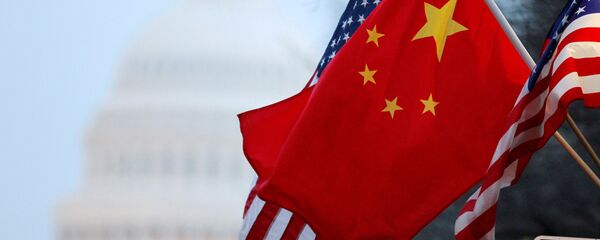Dollar-denominated imports, however, jumped by 13.3 percent year-on-year in August, beating analysts' forecast of a 10 percent rise and higher than the previous month's 11 percent. As such, the country's trade surplus narrowed last month.
China's exports increased by 5.5 percent year-on-year in US dollar-denominated terms in August, customs data showed, missing market expectations for a 6 percent increase and lower than last month's 7.2 percent. Dollar-denominated imports, however, jumped by 13.3 percent year-on-year in August, beating analysts' forecast of a 10 percent rise and higher than the previous month's 11 percent. As such, the country's trade surplus narrowed last month.
The data reflects the yuan's strength this year. The yuan's daily reference rate against the dollar was set at 6.4997 on Monday, 35 basis points stronger than Friday. As of Monday, the currency was given a stronger rate for 11 trading days in a row, the longest stretch since the country's reform of the yuan exchange rate back in 2005.
In terms of external demand, the Purchasing Managers' Index readings for the US and the eurozone remained above the demarcation line of 50 that separates growth from contraction, while South Korea and Vietnam still posted high growth in exports. China's export growth, however, slowed for the second consecutive month in August, which many people have attributed to the impact of yuan appreciation on the price of exports. As for the country's stronger-than-anticipated import growth, it is believed to be relevant for companies that are bringing forward production plans, as they prepare for output curbs to be implemented in the winter heating season. The country has strengthened environmental laws and toughened law enforcement this year amid the government's drive to cut overcapacity. As a consequence, prices of many commodities have picked up, resulting in a price hike in the international market. Some industrial products such as deformed steel bars reported greater price increases within the country than in the global market. Indisputably, rising prices have led to increased imports. In addition, a stronger yuan boosts the currency's purchasing power in the international market and Chinese companies are taking the opportunity from the yuan's strength to ramp up imports.
In August alone, the yuan rose 2 percent onshore, which means that exporting firms' profits for the month would have shrunk 2 percent while importers would have seen a 2 percent increase in profits. Given that the yuan has appreciated 6 percent this year, the country's fragile private exporters will inevitably take a big hit.
The yuan's value against the dollar hit a historic peak in 2014 and the central bank's abrupt decision to reset the yuan's daily reference rate in August 2015 resulted in a substantial slide in the yuan and stirred market fears. As a result, the central bank has taken a raft of measures, including the introduction of a "counter-cyclical factor" into its daily fixing rate formula, to prevent yuan depreciation. Such measures are considered internal factors behind the strong yuan this year.
Various external factors have also lead to the yuan's appreciation. The European economy is humming, which has kept the euro strong, but the dollar's weakness continues, with the administration of President Donald Trump proving ineffective in terms of policy implementation.
That said, it is believed that China's government can give suitable guidance for the exchange rate, but should refrain from intervening too much in the monetary policy instruments targeting asset prices. The exchange rate is supposed to be market-oriented, depending on levels of supply and demand. The story of the foreign exchange market is the interplay of various complex factors and it's difficult for the current tools available to precisely predict future currency moves. For example, few people anticipated the prevailing dollar slide, and while there were concerns that the yuan might weaken to 7 against the dollar, the currency has instead risen a lot.
In light of this, if the government gets too involved in the foreign exchange market, it will only end up resulting in an accelerated strengthening or weakening of the yuan, putting pressure on financial markets and restricting the normal trade activities of companies in the real economy.
On top of that, price fluctuations often incite a type of "herd behavior" in the financial markets. The yuan extends a blistering rally both onshore and offshore, reflecting probably panicked currency purchases and sales as the market moves in accordance with the discovered cyclical patterns.
In its second-quarter monetary policy implementation report in August, China's central bank stated that the addition of the "counter-cyclical factor" to its daily reference rate formula helps in hedging against cyclical swings in the foreign exchange market and accordingly addresses the impact of herd behavior in the foreign exchange market. If that is the case, I would predict that the central bank is likely to take advantage of the "counter-cyclical factor" to allay appreciation expectations. And once the yuan begins moving both ways, the central bank will have to take its hands off the market and let the yuan move spontaneously toward equilibrium.
This story was originally published in The Global Times.




